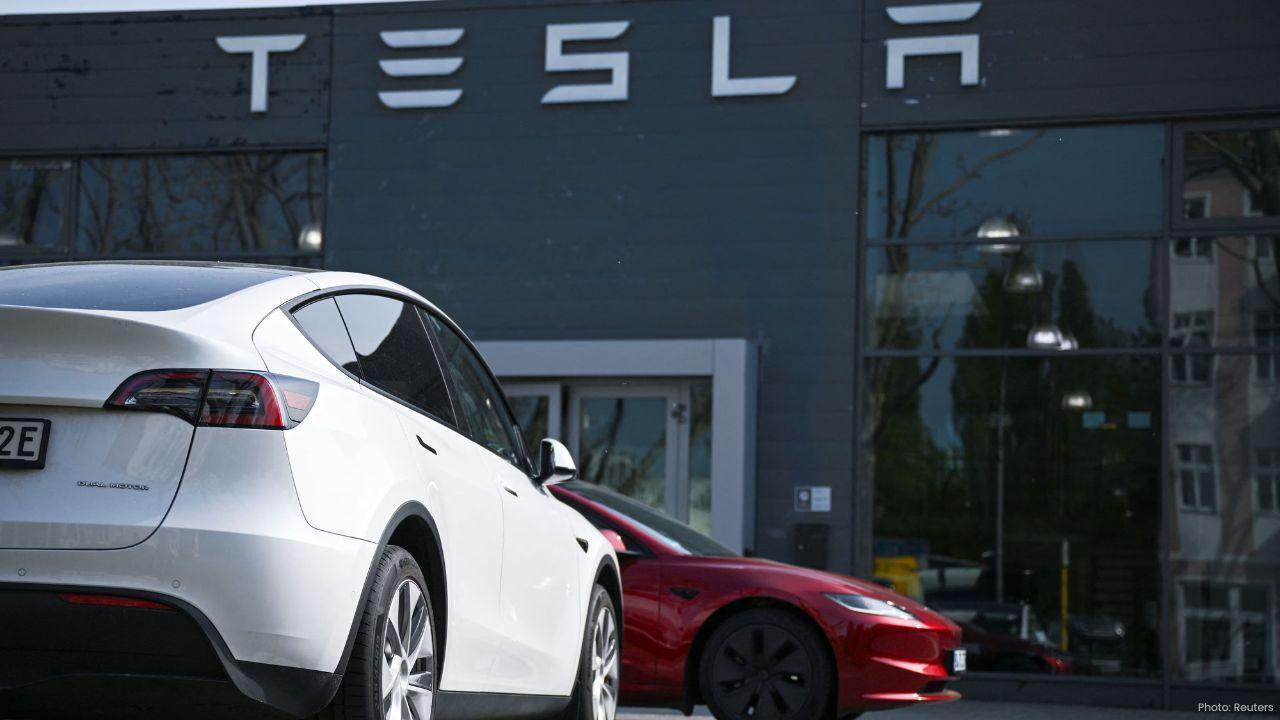
Post by : Meena Rani
Tesla, the electric vehicle giant, has made a major strategic shift, moving away from its long-anticipated affordable car, often referred to as the Model 2. Instead, CEO Elon Musk is directing company resources toward the development of self-driving robotaxis, a move that has surprised many in the industry and raised questions about Tesla’s near-term growth trajectory.
Internal Announcement Confirms Shift
According to a Reuters report, Tesla shared the decision with employees in an internal meeting. The Model 2 had been expected to start at approximately $25,000, marking a key step toward making Tesla vehicles accessible to the mass market. Employees working on the project were reassigned, with Tesla now concentrating on robotaxi technology as its main growth initiative.
The pivot reflects Musk’s ongoing focus on autonomous driving and transportation services, rather than expanding volume through an entry-level electric vehicle. The move is part of Tesla’s broader ambition to dominate the autonomous ride-hailing space, potentially reshaping urban mobility in the coming decade.
Investor Reaction and Market Consequences
The announcement caused immediate concern among investors. Analysts had viewed the Model 2 as crucial to Tesla’s next wave of growth, as the company needed a lower-cost vehicle to capture a wider consumer base. Without the affordable EV, Tesla’s market expansion may slow, and competitors could take advantage of the gap.
Tesla’s stock initially reacted negatively to the reports, reflecting investor unease. The company’s future success now heavily depends on the rollout and regulatory approval of its robotaxi technology—a field that still faces significant technical and legal hurdles.
Competition Intensifies
The delay in launching a mass-market Tesla model leaves an opportunity for other manufacturers. Established automakers, including Ford and Chevrolet, are introducing more affordable electric vehicles aimed at broadening consumer adoption. Meanwhile, Chinese EV manufacturers continue to expand aggressively in global markets, intensifying competition for Tesla.
Industry experts note that while Tesla remains a leader in EV technology, the pivot toward robotaxis represents a higher-risk, longer-term strategy compared to the guaranteed demand for a low-cost vehicle.
Technical and Regulatory Challenges for Robotaxis
Tesla’s robotaxi initiative is ambitious. It relies on fully autonomous driving capabilities, which must meet stringent regulatory standards before public deployment. Current autonomous systems, while advanced, are still undergoing extensive testing and refinement.
The success of Tesla’s robotaxis depends on overcoming safety, regulatory, and technological barriers. Delays or failures in this sector could significantly affect Tesla’s financial performance and market perception, making the Model 2’s absence even more impactful.
Background: The Model 2 Strategy
The Model 2 had been widely anticipated as Tesla’s $25,000 vehicle aimed at mass-market adoption. Analysts expected it to drive significant sales volumes and enhance Tesla’s global footprint. The vehicle’s cancellation underscores the company’s willingness to prioritize long-term autonomous initiatives over immediate market expansion.
Elon Musk has repeatedly emphasized his vision of a fully autonomous ride-hailing network. The reallocation of resources to robotaxis reflects this long-term focus, but leaves investors and consumers watching closely for tangible progress.
Tesla’s strategic pivot from the Model 2 to robotaxis is a bold move that underscores CEO Elon Musk’s focus on autonomous transportation. While it positions Tesla to potentially lead the future of ride-hailing, it introduces near-term risks, opens the door to competitors, and places the company’s growth heavily on the success of advanced autonomous technology. The coming months will be crucial in determining whether Tesla’s gamble pays off or slows its market expansion.
Tesla Model 2, Tesla robotaxi, Elon Musk, electric vehicles










Advances in Aerospace Technology and Commercial Aviation Recovery
Insights into breakthrough aerospace technologies and commercial aviation’s recovery amid 2025 chall

Defense Modernization and Strategic Spending Trends
Explore key trends in global defense modernization and strategic military spending shaping 2025 secu

Tens of Thousands Protest in Serbia on Anniversary of Deadly Roof Collapse
Tens of thousands in Novi Sad mark a year since a deadly station roof collapse that killed 16, prote

Canada PM Carney Apologizes to Trump Over Controversial Reagan Anti-Tariff Ad
Canadian PM Mark Carney apologized to President Trump over an Ontario anti-tariff ad quoting Reagan,

The ad that stirred a hornets nest, and made Canadian PM Carney say sorry to Trump
Canadian PM Mark Carney apologizes to US President Trump after a tariff-related ad causes diplomatic

Bengaluru-Mumbai Superfast Train Approved After 30-Year Wait
Railways approves new superfast train connecting Bengaluru and Mumbai, ending a 30-year demand, easi